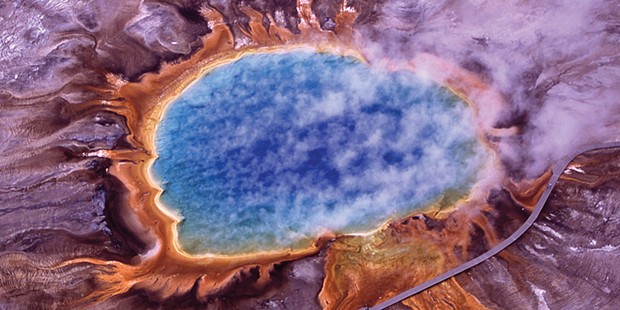[
{
"name": "Top Stories Video Pair",
"insertPoint": "7",
"component": "17087298",
"parentWrapperClass": "fdn-ads-inline-content-block",
"requiredCountToDisplay": "1"
}
]
Last time, I made the case that life on Earth started on Mars. Now, 4 billion years later, that life has evolved to the point where we can start thinking about spreading it farther afield, that is, into the galaxy. Because of the near-miraculous sequence of steps required to get from inanimate to animate — from chemistry to life ("Kickstarting Life," Nov. 10) — and given the absence of evidence for ETs, it may well be that humankind is the only conscious life in the Milky Way.
Which is a kinda-sorta case for acting as stewards of life, spreading the wealth by taking it to the stars. We're in the early, inefficient stages; it took 3,000 tons of Saturn V rocket to put 1/5 ton of human flesh on the moon. But we can do a lot better than that. Here are three possible scenarios.
Smart Robots: We send robotic spacecraft to planets and moons of suitable stars. Once safely landed, they use native materials to copy themselves many times over and launch their progeny into the depths of space to repeat the process, thereby colonizing our entire galaxy in a few million years. These machines would be sufficiently smart to be classified as "life" by most standards.
Noah's Arks: "Getting from here to there is the problem of engineering. ... That is the easy part. The hard part is knowing what to do when you get there. That is the problem of biology," according to physicist Freeman Dyson. His idea is transport biological life to barren planets and moons using many ostrich-egg sized spacecraft — miniatures of Noah's ark — containing "living seeds with the genetic instructions for growing millions of species of microbes and plants and animals, including males and females of sexual species, adapted to live together and support one another in an alien environment."
Super-humans: Superman's coolest ability, rather taken for granted, is that he can survive in space wearing nothing but Spandex. Taking a cue from him (and Margaret Atwood's dystopian novel Oryx and Crake), we can imagine adapting ourselves to harsh environments through genetic engineering. Instead of enclosing our relatively frail bodies in bulky spacesuits, we bioengineer humans to, say, walk around on Mars au naturel. Nature has already given us some pointers here on Earth, in the form of "extremophiles," creatures that thrive in what we would consider outrageously alien conditions: acidic hot springs, sunless caves, half-mile-deep oceanic hydrothermal vents. Once we figure out Mars, we can go on to adapt our bodies for survival in yet more extreme conditions, perhaps even in empty space. (We might start off losing the body, keeping the brain to create a cyborg flesh-machine hybrid.)
So here's the long game: Some 400 million years ago, our ancestors left the three-dimensional freedom of the oceans for the two-dimensional surface of land. Which, from our point of view, worked fine, allowing us to evolve into big-brained, self-aware, bipedal creatures with awesome hands, eyes and ears. Now it's time for us to reclaim our three-dimensional legacy in (where else?) space. Not this generation but soon, one way or another, we'll build smart machines or life-filled arks, or we'll bioengineer ourselves in order to not just launch into space, but to live there.
Barry Evans' Revenge of Field Notes, a collection of 96 columns from the past three years (with additional material and photos), should be available at local bookstores by the time you read this.
Comments
Showing 1-1 of 1
more from the author
-
A Brief History of Dildos
- Apr 11, 2024
-
Eclipse!
- Mar 28, 2024
-
The Little Drone that Could
- Mar 14, 2024
- More »
Latest in Field Notes
Readers also liked…
-
Trouble on the Line: The Reality Part 2
- Nov 3, 2022


































